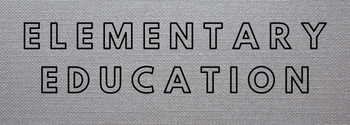Decoding Perplexity: Unleashing The Power Of Writing
Are you familiar with the feeling of being completely confused and disoriented, unsure of what to make of a situation or how to express your thoughts? This state of perplexity is common in many aspects of life, including writing. We often find ourselves struggling to put our bewildering thoughts into words, trying to convey our uncertainty through text. In this article, we will delve into the concept of bewilderment in writing, exploring how it can be defined, expressed, and illuminated in words. Join us as we unravel the perplexity in writing and discover the power of portraying puzzlement through text.
Defining Bewilderment in Writing
Bewilderment is a state of confusion or puzzlement that one experiences when faced with something unexpected or unfamiliar. It is a feeling of being lost, disoriented, and unsure of what to do or think. In writing, bewilderment can be conveyed through the use of language and literary devices such as imagery, metaphor, and ambiguity. Through carefully chosen words and phrases, a writer can effectively express their own sense of perplexity and capture the reader’s attention.
How to Describe Confusion in Writing: Pros and Cons of Remote Learning for Kids in 2022
Expressing Perplexity Through Text
When writing about a confusing or bewildering experience, it is important to choose your words wisely to accurately convey the level of perplexity. Adjectives such as ‘bewildering’, ‘perplexing’, ‘confounding’, and ‘puzzling’ can help to create a sense of confusion in the reader’s mind. Additionally, using vivid and specific details can paint a clearer picture and immerse the reader in the narrator’s experience.
For example, instead of saying "I was confused", a writer could say "I felt like I was trapped in a labyrinth with no way out". This not only conveys the narrator’s confusion but also creates a visual image for the reader to better understand the situation.
Illuminating Disorientation in Words
Disorientation is a common feeling associated with bewilderment, and it can be effectively expressed through the use of metaphors and similes. These literary devices can enhance the reader’s understanding of the disorienting experience and create a more impactful description.
For instance, a writer could describe the overwhelming feeling of perplexity as "a storm raging inside my mind, with thoughts colliding and swirling in chaotic patterns". This not only paints a picture but also conveys the intense emotions associated with being bewildered.
Unraveling Perplexity in Writing
One of the best ways to unravel perplexity in writing is through the use of dialogue. By having characters talk and express their confusion, the reader can better understand the situation and empathize with the characters. Dialogue can also add depth and dimension to the story and make it more engaging for the reader.
In addition, utilizing suspense and tension can add to the sense of confusion and maintain the reader’s interest. For example, a writer could slowly reveal information and leave gaps in the narrative, creating a sense of mystery and confusion that can only be resolved by continuing to read.
Narrating Perplexion in Text
The way in which a story is narrated can greatly influence the reader’s understanding and perception of bewilderment. First-person narration, for example, can bring the reader close to the narrator’s thoughts and emotions, making the confusion more palpable. On the other hand, a third-person objective narration can create a sense of detachment and mystery, leaving the reader to decipher the confusion on their own.
It is important for a writer to choose the most effective method of narration to properly convey the sense of bewilderment they are trying to express.
Articulating Puzzlement Through Writing
When writing about puzzlement, it is important to remember to show rather than tell. Instead of simply stating that a character is puzzled, it is more effective to describe their actions, thoughts, and expressions to convey their state of mind.
For example, rather than saying "He was confused", a writer could say "He furrowed his brow and rubbed his temples, trying to make sense of the situation". This allows the reader to experience the character’s confusion in a more visceral way.
Conveying Uncertainty Through Words
Uncertainty often accompanies bewilderment, and it can be conveyed through hesitation and doubt in a character’s dialogue or internal monologue. This can also be achieved by using uncertain language, such as "maybe", "perhaps", and "I’m not sure". These words can create a sense of unease and contribute to the overall feeling of confusion in the writing.
In addition, using rhetorical questions can effectively communicate the narrator’s uncertainty and add depth to their thoughts. For instance, a writer could ask "Could this really be happening?" or "What am I supposed to do now?" These questions not only convey the character’s doubts but also engage the reader in the thought process.
Depicting Bewildering Thoughts in Writing
Bewildering thoughts can be complex and difficult to put into words, but writing can allow for a deeper exploration of these thoughts. By utilizing stream of consciousness, a writer can accurately depict the tangled and chaotic nature of perplexity. This writing technique involves writing down thoughts as they come, without any editing or censoring, mimicking the way our minds work when we are confused or overwhelmed.
Additionally, using symbolism and metaphor can help to convey the complexities of bewilderment. These literary devices can add depth to the writing and invite the reader to interpret and analyze the confusing thoughts and emotions being portrayed.
Elucidating Confusion in Written Form
Confusion and perplexity are universal experiences that can be expressed in various forms of writing, including poetry, prose, and even journaling. Writing about confusion and bewilderment not only allows for self-expression but also facilitates understanding and empathy from readers who may have experienced similar emotions.
In order to effectively elucidate confusion in written form, it is important for a writer to tap into their own emotions and personal experiences. This not only adds authenticity to the writing but also creates a stronger connection with the reader.
Describing Perplexed Emotions in Text
Bewilderment can come with a range of emotions, including frustration, fear, and helplessness. When describing these emotions in writing, it is important to avoid clichés and instead use concrete and specific details to paint a picture for the reader. Showing the physical manifestations of these emotions, such as trembling hands or tears streaming down one’s face, can effectively convey the intensity of the emotions.
In addition, utilizing sensory details can immerse the reader in the experience and evoke a more emotional response. For example, describing the sounds, smells, and textures associated with the situation can create a more vivid and realistic portrayal of the perplexity being experienced.
Conclusion
Bewilderment is a complex and powerful emotion that can be effectively conveyed through writing. By carefully choosing language, utilizing literary techniques, and tapping into personal experiences, a writer can articulate their own sense of confusion and invite the reader to connect with the story on a deeper level.
In conclusion, writing has the power to capture and convey complex emotions, thoughts, and experiences. One such emotion is bewilderment, which can be defined as a state of confusion or uncertainty. Through the use of various writing techniques and styles, writers can effectively express perplexity, illuminate disorientation, and unravel puzzlement on the page. By narrating perplexing emotions, articulating puzzlement, and conveying uncertainty through words, writers are able to truly depict the complexities of being bewildered. Through the written word, we are able to paint a vivid picture of our perplexed thoughts and feelings, allowing readers to empathize and connect with our experiences. Writing has the ability to shed light on confusing and bewildering situations, providing insight and understanding to both the writer and the reader. So, let us continue to explore and articulate bewilderment through writing, as it adds depth and richness to our stories and ultimately, to our lives.



